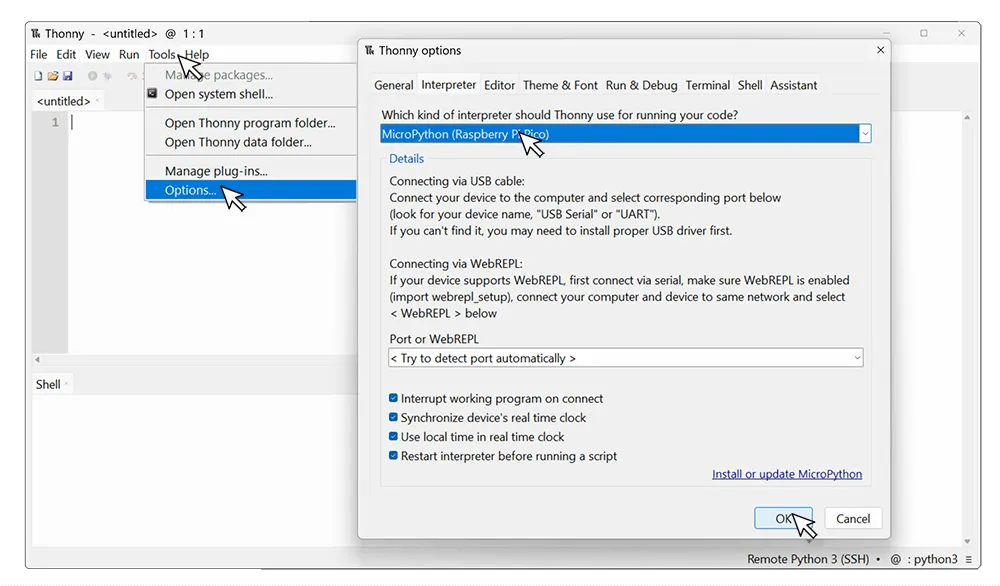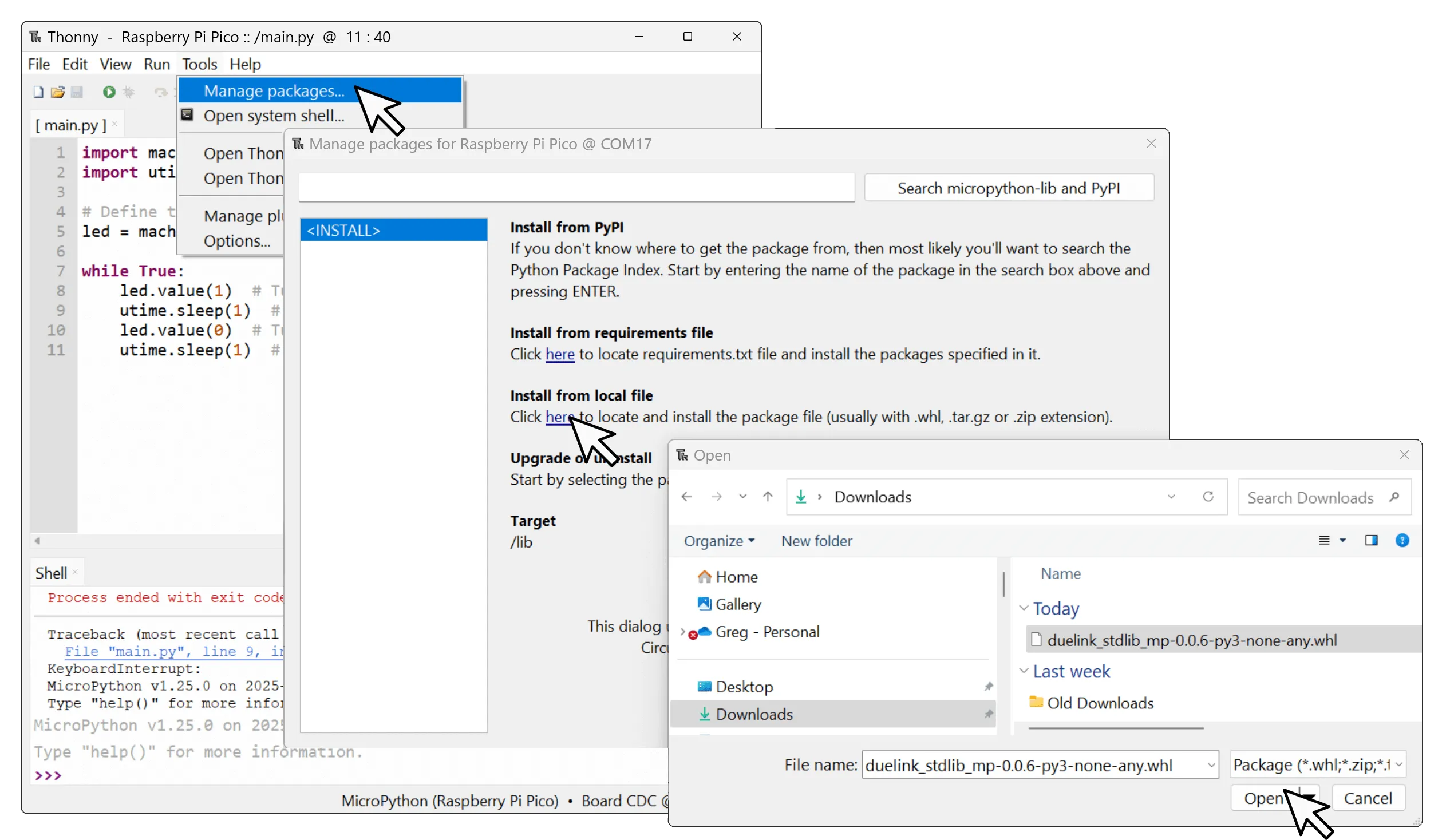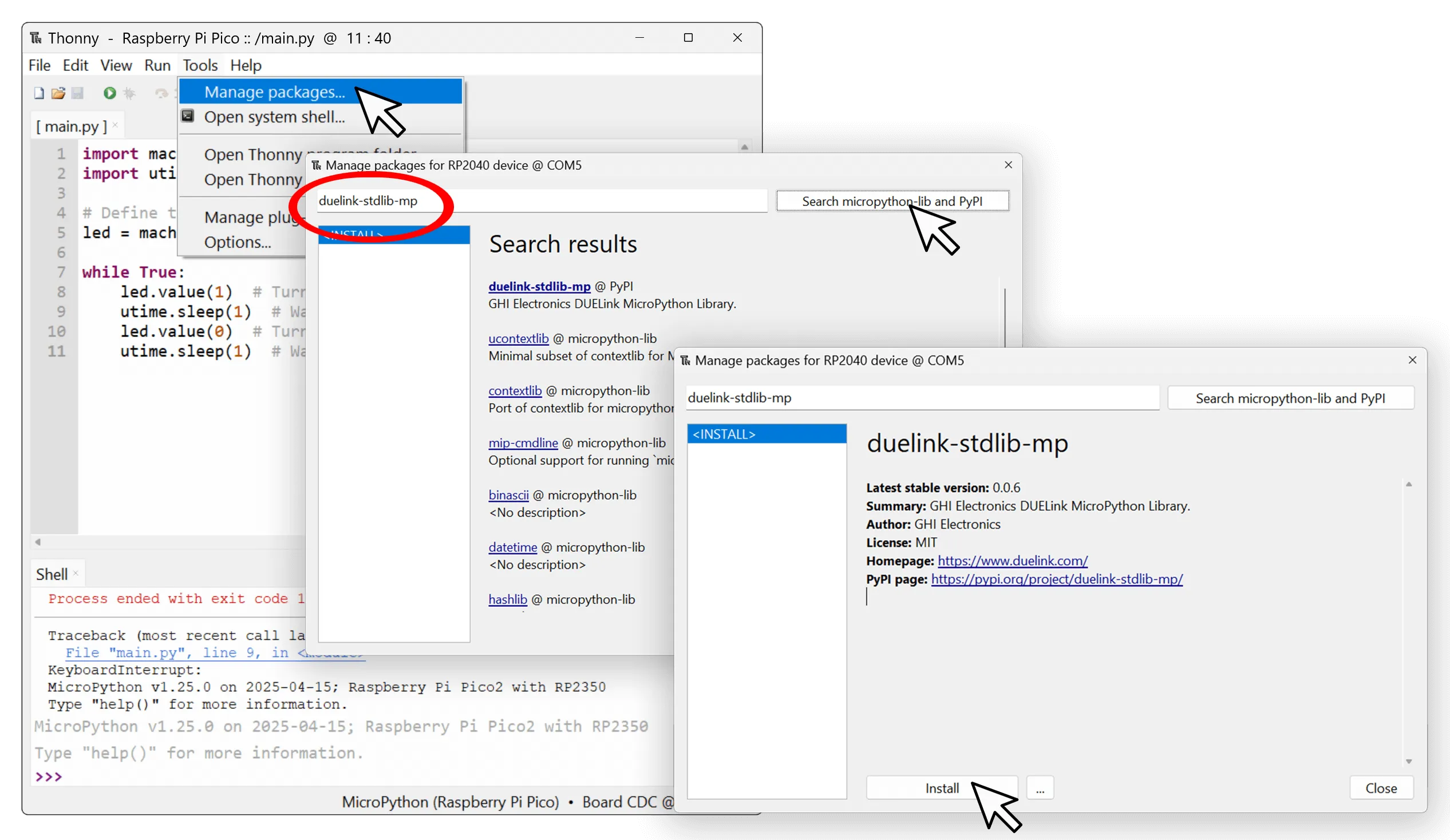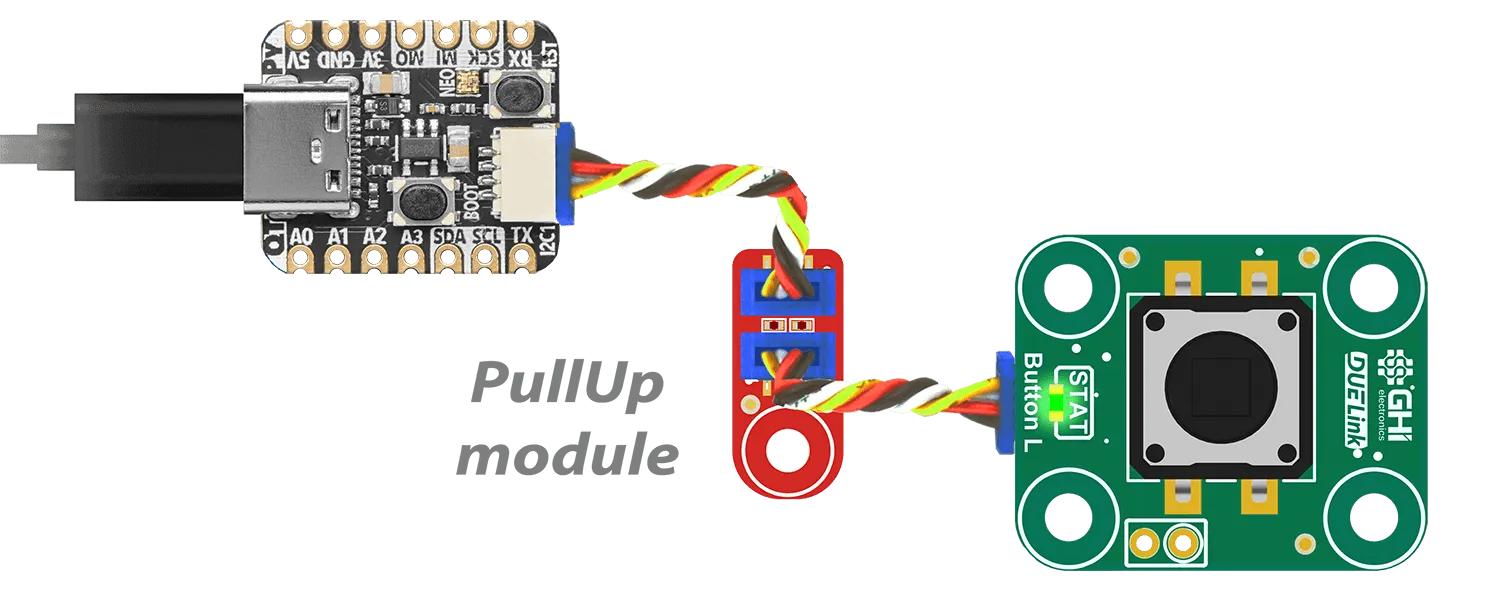MicroPython

You can use DUELink with any microcontroller that uses MicroPython by connecting a Breakout module to either the I2C or UART output of the board.

MicroPython with DUELink is also fully supported on Raspberry Pi microcontroller-level (RP2040/RP2350) boards, such as Raspberry Pi Pico.
DuePico is the perfect Raspberry Pi adapter for connecting DUELink modules.

We'll use Thonny IDE to program the RaspberryPi Pico in MicroPython. We will use the Pico to access DUELink modules attached to the DuePico's Downlink connector.
Setup
First make sure your board is set up for MicroPython. Follow the steps found at MicroPython.org to load the firmware for your specific hardware.
Connect to the board by going to Tools/Options and select the proper Interpreter. In this case we'll be selecting MicroPython(Raspberry Pi Pico).

We can test that everything is working correctly by blinking the Raspberry Pi Pico's onboard LED.
import machine
import time
led = machine.Pin(25, machine.Pin.OUT)
while True:
led.on()
time.sleep(1)
led.off()
time.sleep(1)
Libraries
Users have two options for loading the DUELink MicroPython library into Thonny. They can either download the duelink-stdlib-mp file found at pypi.org to their computer, and Install from local file found under Tools/Manage packages.

Alternatively, users can type duelink-stdlib-mp into the search window and Install from PyPi directly.

Blinky!
We can now access the complete DUELink standard library from inside Thonny. We need to use UART Interface to communicate to the modules when using Raspberry Pi Pico. Let's blink the STAT led on a connected DUELink module.
import time
import machine
import duelink
from duelink import transport
uart = transport.UartTransportController(0)
due = duelink.DUELinkController(uart)
due.system.statled(50,50,0)
You can also use boards that already have a JST connector, like Adafruit QT Py RP2040 or Sparkfun Pro Micro RP2350. However, note that these boards use the I2C Interface.

import time
import machine
import duelink
from duelink import transport
from machine import Pin, Timer
sclPIN = machine.Pin(23)
sdaPIN = machine.Pin(22)
i2c = transport.I2CTransportController(sda=sdaPIN, scl=sclPIN)
due = duelink.DUELinkController(i2c)
due.system.statled(50,50,0)
Some third-party boards are not properly equipped with the proper I2C pull up resistors. The DUEink pull-up board can be used to solve this problem. See I2C Interface page for more details.

Daisylinking
In the example below, we'll use the DuePico connected to an OLED 0.96 Display, Button, and Buzzer modules.
Make sure these modules are loaded with Drivers.
Note how the DuePico itself is a module, which is Device 1.

import time
import duelink # standard lib
from duelink import transport
# device 1 is DuePico
# device 2 is OLED 96
# device 3 is Button S
# device 4 is Buzzer
uart = transport.UartTransportController(0)
due = duelink.DUELinkController(uart)
due.Engine.Select(1)#DuePico Display
due.Graphics.Clear(0)
due.Graphics.TextS("DUELink", 1, 30, 27,2,2)
due.Graphics.Show()
due.Engine.Select(2)#OLED 96 Module
due.Graphics.Clear(0)
due.Graphics.Text("--DUELink--", 1, 30, 1)
due.Graphics.Text("Press button on", 1, 1, 21)
due.Graphics.Text("device 2 to play", 1, 1, 31)
due.Graphics.Text("sound on device 3", 1, 1, 41)
due.Graphics.Show()
due.Engine.Select(3)#Button Module
due.Button.Enable(1,1,1)
due.Engine.Select(1)#DuePico `A` Button
due.Button.Enable(20,1,2)
while True:
due.Engine.Select(3)#Button Module
if due.Button.Down(1):
due.Engine.Select(4)
due.Frequency.Write(7, 1000, 100, 0.5)
time.sleep(0.1)
due.Engine.Select(1)#DuePico Module
if due.Button.Down(20):
due.Frequency.Write(11, 1000, 100, 0.5)
time.sleep(0.1)
With DUELink we can control multiple modules of the same type. For example, we can show information on both displays.